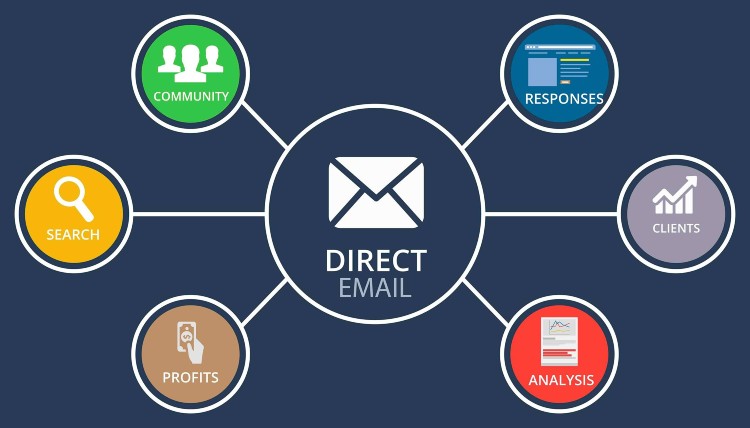As technology has evolved, the way businesses communicate with customers has changed. With so many platforms for advertising and marketing available, it can be challenging to determine which methods are the best for reaching consumers. Some companies might argue that digital marketing is the only way to go, but that’s not true. Direct mail remains a powerful communication tool, and these ten statistics show why it’s still essential to any business’s marketing mix.
1. Direct mail response rates have been increasing
With the advent of new technology, one might assume that direct mail response rates would decline; however, the opposite is true. Direct mail response rates increased by 4.4% compared to the previous year, according to the Data & Marketing Association’s annual Response Rate Report1. Direct mail has seen the highest response rate in nine years.
The increase in response rates can likely be attributed to direct mail becoming more targeted. With advanced data analytics, businesses can understand better their customers and what kinds of messages will resonate with them. As a result, direct mail is becoming more effective and efficient, reflected in the higher response rates.
2. Direct mail is more personal
In today’s digital world, it can be easy for businesses to get lost in the shuffle. Consumers are bombarded with countless ads and emails daily, so it’s no wonder many of them tune out much of the online noise.
Direct mail stands out in this cluttered landscape because it is a more personal form of communication. It allows businesses to reach consumers on a one-to-one basis and share a message in a more intimate way. As a result, direct mail can be more effective in building customer relationships and driving conversions.
3. Direct mail is likely to be noticed
With so much digital marketing noise, it can be difficult for businesses to get their messages noticed by consumers. According to a study by the Nielsen Norman Group2, people are bombarded with an average of 5,000 marketing messages daily. Of those messages, only about 20% are noticed by the recipient.
Direct mail is more likely to be noticed because it’s a physical piece that arrives in the mailbox. It’s not easy to ignore or delete direct mail, so businesses can be sure that consumers see their messages.
4. Direct mail is more effective for certain types of businesses
While direct mail can be effective for any business, some industries see full results from this type of marketing. Direct mail response rates for financial services companies average about 9%, according to the DMA’s Response Rate Report1. It is significantly higher than the overall direct mail response rate of 3.7%.
Other industries with high direct mail response rates include insurance, real estate, and automotive. It shows that direct mail can be an effective way to reach consumers in various industries.

5. Direct mail is still popular with consumers
Despite the rise of digital marketing, direct mail remains popular with consumers. Direct mail is the third most preferred method of receiving information from companies, behind email and in-person interactions, according to a study by the Data & Marketing Association3.
Consumers appreciate direct mail because it offers them more control. They can choose when and where to read direct mail pieces, unlike online ads that pop up unannounced. This feeling of control is one of the main reasons why direct mail remains popular with consumers.
6. Consumers trust direct mail
Another reason direct mail is popular is that consumers trust it. In the DMA’s study3, direct mail was ranked as the second most trustworthy form of marketing, behind only face-to-face interactions.
This trust is likely due to direct mail being a more personal form of communication. It’s not as easy to ignore or delete direct mail, so consumers are more likely to pay attention to the messages they receive. As a result, businesses that use direct mail can be sure that their messages are being seen and trusted by consumers.
7. Direct mail is efficient
Technological advances allow businesses to send direct mail more efficiently than ever before. The DMA’s Response Rate Report1 found that the average cost per response for direct mail has decreased by 18% over the past five years.
This efficiency is because businesses can now target their direct mail campaigns more precisely. Thanks to data, businesses can identify their most valuable customers and send them tailored messages more likely to convert.
8. Direct mail is measurable
Another benefit of direct mail is that it’s highly measurable. Unlike some forms of marketing, it’s easy to track the results of a direct mail campaign and determine whether or not it was successful. Businesses can use several metrics to measure the success of their direct mail campaigns, including response rate, conversion rate, and cost per acquisition. By tracking these metrics, businesses can fine-tune their direct mail campaigns for better results.
9. Direct mail can be personalized
Thanks to technological advances, businesses can now personalize their direct mail campaigns much more than ever before. With variable data printing, businesses can include personalized messages, images, and even videos in their direct mail pieces.
This personalization is crucial because it helps businesses stand out in crowded mailboxes. It also allows businesses to speak directly to their customer’s needs and interests, increasing response rates and conversions.
10. Direct mail is here to stay
Despite the digital marketing rise, direct mail remains an effective marketing tool that delivers accurate results. Thanks to its many benefits, including its high response rate and trustworthiness, direct mail should be a part of every business’s marketing mix. Knowing direct mail will continue to be an essential part of marketing, businesses that invest in direct mail will be well-positioned for success.


